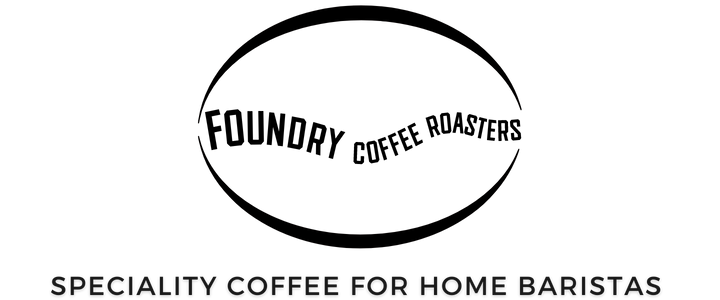-
Buy Coffee
-
Buy Other Stuff
-
Everything Else
ORDERS PLACED NOW WILL BE SHIPPED ON MONDAY 29th DECEMBER - (more info here)
August 02, 2021
As a coffee consumer have you given much thought to what goes into the production of your morning cup of coffee? Not just in terms of the manual effort but also the carbon footprint that results from getting this wonderful substance from a faraway farm into our mugs. We've been thinking about this a lot lately.
As you may already know, we are currently engaged in work around trying to develop a better understanding of our impact on the environment and we want to share that journey with you too. By giving you this information, you will be better able to make informed decisions about the products that you buy and the businesses that you buy them from.
In this post, we are thinking about our main ‘product’, speciality coffee. The entire supply chain from coffee farm to landfill site - and everything in between - can be considered and defined using the concept of a ‘Life Cycle Assessment’ (LCA).
The LCA incorporates the whole process of growing, harvesting, processing milling and exporting of coffee beans. Not only these factors though (which largely occur in lands far away), but also the processes that we subject the coffee to after we take delivery of it. This includes roasting and getting it shipped out to you. Finally, we also consider the carbon impact of the coffee being brewed and the disposal of any waste products, including packaging.
Given that it wouldn’t be feasible to get specific data concerning every single lot of coffee that we buy, we rely heavily on detailed research that has been conducted by other people and then we apply these findings to our own business activity. In an example of one such piece of detailed research, Nan and Maslin measured the carbon footprint of Brazil’s and Vietnam’s conventionally and sustainably produced coffee.
The researchers’ 'bottom line' findings can be found in Table 1 - expressed as kgCO2e which means the amount of carbon, methane and nitrous oxide in kilograms produced for each 1kg of green coffee. Of course, there is a lot more data that feeds into this calculation and you can follow the link to the full paper at the bottom of this article if you're interested.

The term ‘conventional’ production refers to air freight of exported coffee beans from the producing country to the consuming country; conventional production also typically involves high volumes of fertiliser and agrochemicals in the farming stage. ‘Sustainable’ production can be defined by the employment of cargo shipping by sea to export coffee beans. This process also includes a reduction in the amount of fertilisers used in the farming process when compared to conventional production. Speciality coffee falls within the scope of the ‘sustainable’ approach, whereas more conventional processes are more likely to be used in the production of commodity coffee.
From this, it can be seen that transportation (exportation from both Brazil and Vietnam to the UK) accounts for above 90% of the overall CF in conventional production of green coffee as a result of the combustion of fossil fuels required to transport the goods by air.
In comparison, sustainable production methods result in a dramatic reduction in kgCO2ekg-1 for both Brazil and Vietnam. Using cargo shipping freight instead of air travel and using less fertilisers and agrochemicals in the production of coffee beans is both more environmentally-friendlier and much more sustainable in terms of GHG emissions.
What does this have to do with FCR?
Using the data acquired by Nab and Maslin (2020) and from a similar study conducted in Costa Rica by Killian et al (2013) we can get a general idea of our own carbon footprint when it comes to not only sourcing our coffee but also when trying to take account of the carbon impact resulting from the various processes that we subject the coffee to, including roasting, packaging and shipping.
In summary, we will be using the baseline figure of 4.98 kgCO2e per 1kg of green coffee purchased to base our calculations on. This figure is the one that Killian et al arrive at and is the higher of the two figures from the two studies we have looked at. There are two reasons main reasons that we are basing our assumptions on this figure.
Firstly, the coffee supply chain in the Killian study appears to more closely resemble the characteristics of the supply chains that we use more frequently. Secondly, if we have two figures to choose between, we thought it best to use the highest one to give ourselves less chance of underestimating the impact of this vital aspect of our business. It is important to note though that we will also be adjusting this figure either up or down when we have more accurate data that relates to our specific circumstances or activity.
We'll be digging into this a bit more over the coming weeks, so keep an eye out here and on our Instagram - and thanks for reading!!
If you would like to read further into the topics covered, please check out the links below.
(Nab and Maslin, 2020. Paper on the Life Cycle Assessment for conventional and sustainable coffee production in Brazil and Vietnam and export to the UK). Read the full paper here.
(Killian et al, 2013. Paper on the Carbon Footprint of coffee production in Costa Rica). Read the full paper here.
Would you like not know more about LCA's? There is a useful guide here.
Written on behalf of Foundry Coffee Roasters by Eleanor Bragg.
